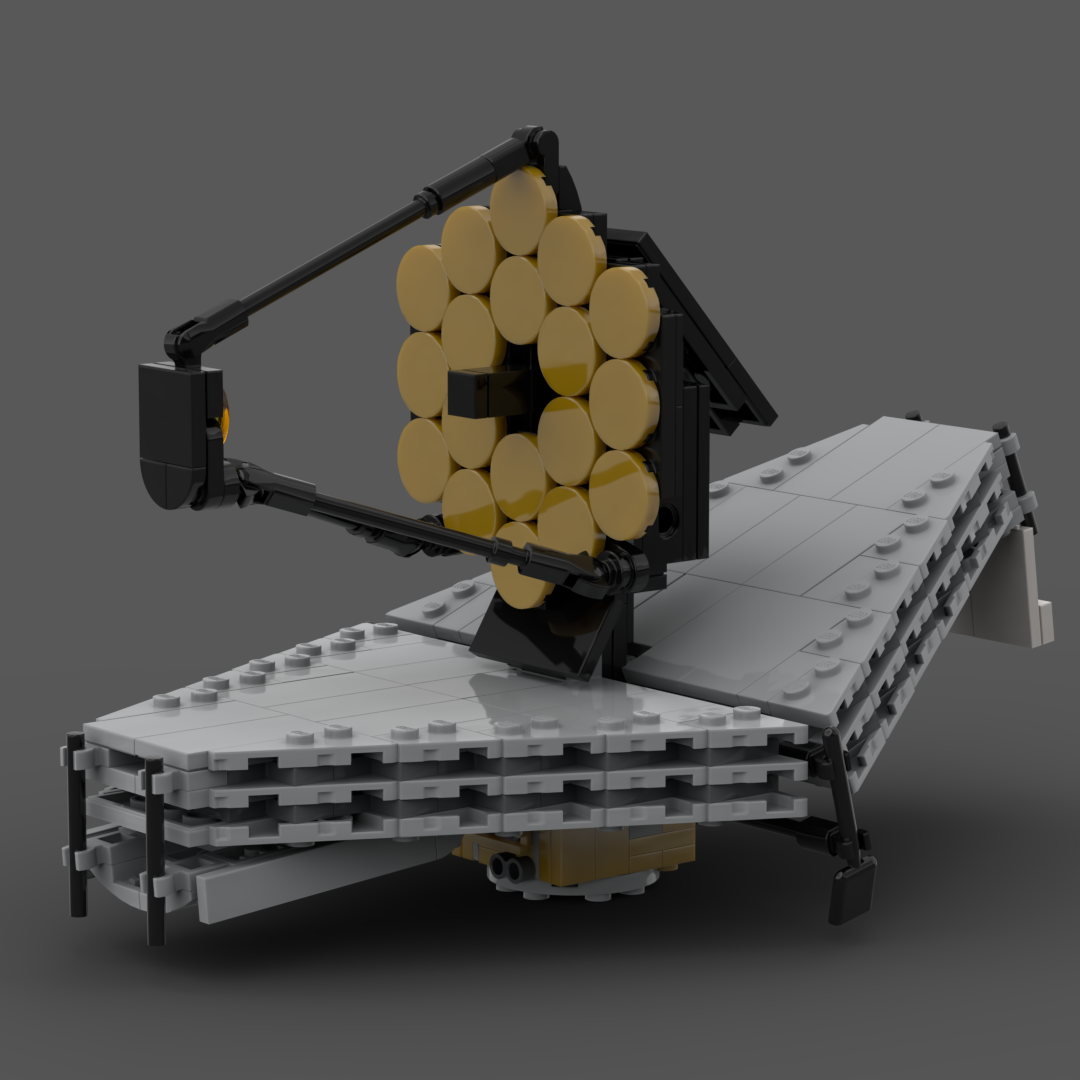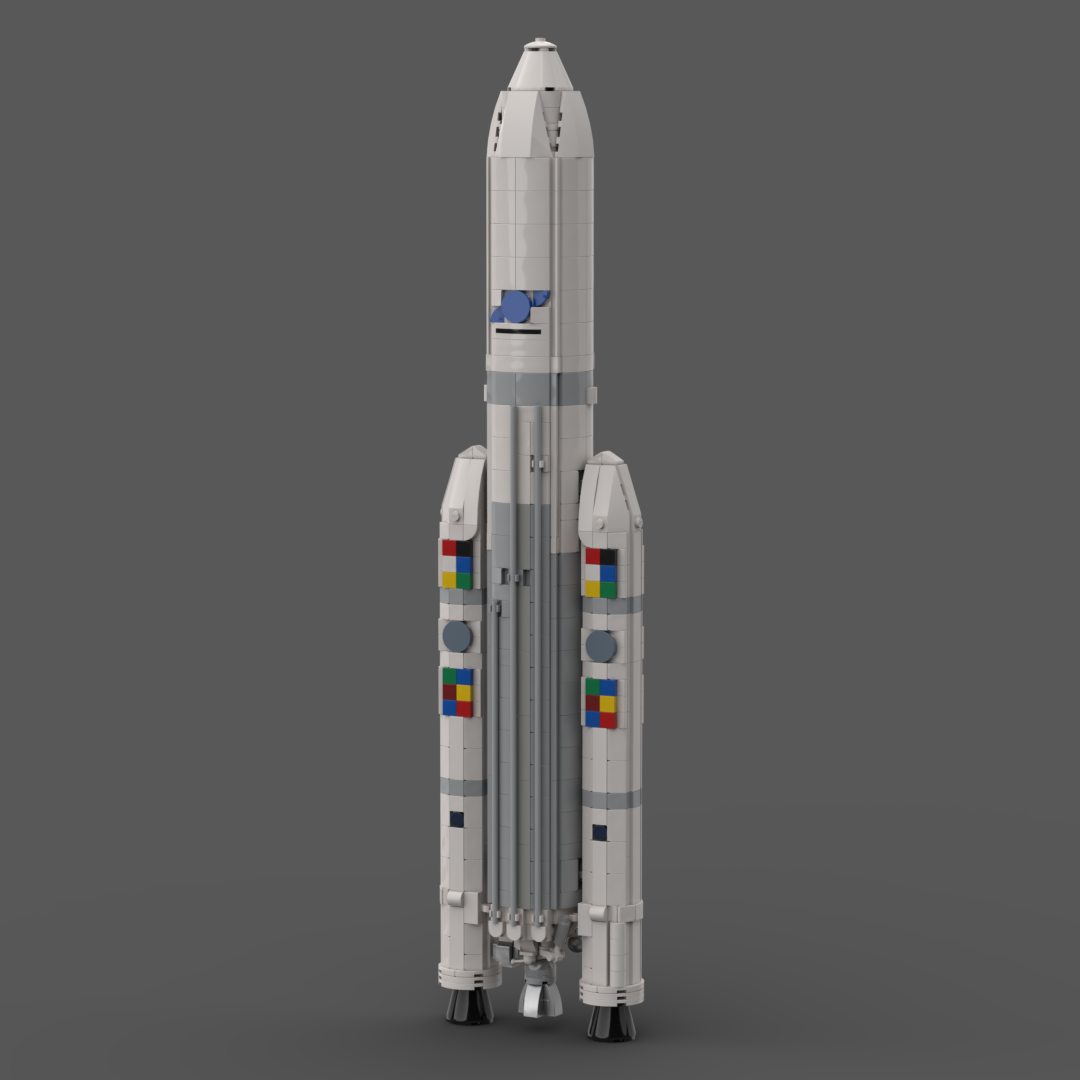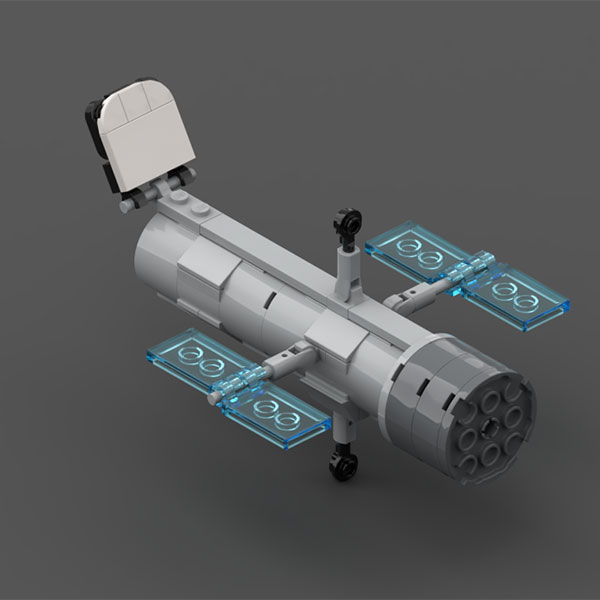
LEGO Designer:
William Moore (WillM)
Designed:
February 2021
Categories:
All, Payloads, Probes and Satellites, Space Agency - ESA, Space Agency - NASA, Sun-Earth L2
Launch Vehicle Details
Stages:
Length:
Diameter:
Mass at Launch:
Low Earth Orbit Capacity:
Total Thrust:
Apogee:
Class:
The James Webb Space Telescope (JWST) is a space telescope developed by NASA with contributions from the European Space Agency (ESA), and the Canadian Space Agency (CSA). The telescope is named after James E. Webb, who was the administrator of NASA from 1961 to 1968 and played an integral role in the Apollo program. It is intended to succeed the Hubble Space Telescope as NASA’s flagship mission in astrophysics.
JWST was launched on 25 December 2021 on Ariane flight VA256. It is designed to provide improved infrared resolution and sensitivity over Hubble, and will enable a broad range of investigations across the fields of astronomy and cosmology, including observations of some of the most distant events and objects in the Universe such as the formation of the first galaxies, and allowing detailed atmospheric characterisation of potentially habitable exoplanets.
The James Webb Space Telescope has a mass about half of Hubble Space Telescope’s, but its primary mirror, a 6.5 m (21 ft)-diameter gold-coated beryllium reflector has a collecting area over six times as large, 25.4 m2 (273 sq ft), using 18 hexagonal mirrors with 0.9 m2 (9.7 sq ft) obscuration for the secondary support struts.
JWST is designed primarily for near-infrared astronomy, but can also see orange and red visible light, as well as the mid-infrared region, depending on the instrument. The design emphasizes the near to mid-infrared for three main reasons:
1. high-redshift objects have their visible emissions shifted into the infrared
2. cold objects such as debris disks and planets emit most strongly in the infrared
3. this band is difficult to study from the ground or by existing space telescopes such as Hubble
Ground-based telescopes must look through Earth’s atmosphere, which is opaque in many infrared bands. Even where the atmosphere is transparent, many of the target chemical compounds, such as water, carbon dioxide, and methane, also exist in the Earth’s atmosphere, vastly complicating analysis. Existing space telescopes such as Hubble cannot study these bands since their mirrors are insufficiently cool (the Hubble mirror is maintained at about 15 °C (288 K; 59 °F)) thus the telescope itself radiates strongly in the infrared bands.
JWST will operate in a halo orbit around the Sun-Earth L2 (Lagrange point), approximately 1,500,000 km (930,000 mi) beyond Earth’s orbit around the Sun. By way of comparison, Hubble orbits 550 km (340 mi) above Earth’s surface, and the Moon is roughly 400,000 km (250,000 mi) from Earth. This distance means any repair or upgrade of the hardware will be very complicated and likely prohibitively costly. Objects near this Sun-Earth L2 point can orbit the Sun in synchrony with the Earth, allowing the telescope to remain at a roughly constant distance with continuous orientation of its unique sunshield and equipment Bus toward the Sun, Earth and Moon to block their heat and light and to maintain communications. This arrangement will keep the temperature of the spacecraft below the 50 K (−223 °C; −370 °F) necessary for faint infrared observations.
This model came about as a collaboration with others in the Bricks In Space community. It is nominally 1:110 Saturn V scale although the 2×2 round tiles used as primary mirror elements make the optics a little bigger than that. The main mirror has been improved over my prior version, nearly a perfect hexagon now. While the real JWST has 5 layers on the sunshield, this model only has 3 layers for better overall proportion. The .io file and high-quality PDF instructions are provided free. Happy building and keep looking up!
Part count: 487 bricks, 112 lots.
| Unit | width | length | height |
|---|---|---|---|
| Studs | 26.5 | 17.1 | 17.5 |
| Inches | 8.4 | 5.4 | 5.5 |
| Centimetres | 21.2 | 13.7 | 14.0 |
No external URL provided.
Launch History information from space.skyrocket.de
Launch History information from space.skyrocket.de



